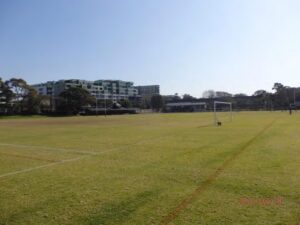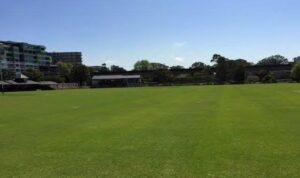Sport has been played at Sydney Grammar School since one of its most prominent alumni, Australia’s first Prime Minister, Sir Edmund Barton, was the school captain in 1864-65.
A keen cricketer, his captaincy coincided with the introduction of overarm bowling when England great WG Grace was making the game his own. Much has changed about the sport, the school and indeed the playing fields in the intervening 150 years.
At Sydney Grammar today, more than 1,100 students play hundreds of games of rugby, cricket and soccer daily over the course of a year, on turf specifically designed and grown to cope with heavy traffic, studded boots and wildly varying weather conditions.
Sir Edmund would be unable to comprehend the three hectares of playing fields now dedicated to sport at a school frequently rated the top private school in Sydney. Similarly, the technology behind the impeccable Village Green Turf that adorns these natural sporting ground turf fields would seem like science fiction.

Changing the grass
“Annually, with Village Green we require no weed control and now only replace 100 square metres of turf, mainly in goal mouths, compared to common Kikuyu that used to require 1,000 square metres to be replaced every year and it had to be sprayed for weeds,” the school’s grounds curator said.

Hitting a turf good length
“We apply Primo Maxx in early December and again in mid-January, which increases density, prevents potential thatch build-up,reduces mowing and, most importantly, gives us a chance to take a break and go on holidays,” the curator enthused.
“Growth inhibitors such as Primo Maxx reduce the vertical growth of the turf and encourage lateral growth of the turf plant instead,” Mr Johnson said. “By using a combination of tools to manage the turf, like the application of a growth inhibitor, low mowing regime and appropriate fertiliser application, turf managers can ensure an excellent playing surface of Village Green throughout the year,” he said.
“The characteristics of Village Green turf are perfectly suited to Australian conditions and this is now being recognised in southern Europe as well, where clients in Italy, Spain, Cyprus and elsewhere are embracing the turf’s resilience, verdant appearance and low maintenance qualities,” he said.





